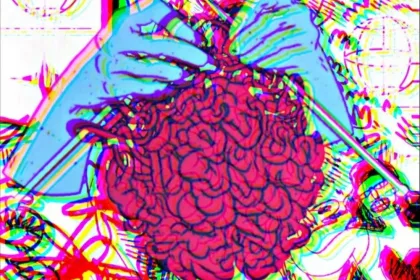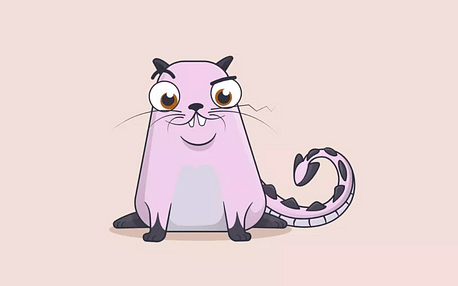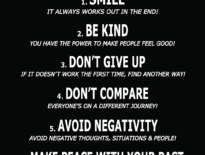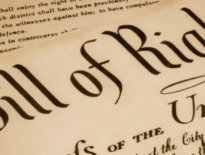
It’s difficult today, online, if you’re paying any attention all to cryptocurrency or media innovation, to not have heard “NFT”
A .gif of Nyan Cat sold for lots and lots (and lots) of money as an NFT. These things have interest near hype from Nike, Visa, Warner Music Group, and Nike. Time Magazine‘s recently sold 4,500 TIMEPieces in one minute and Tiger Woods recently sold NFTs on Autograph through a marketplace from DraftKings; Autograph, co-founded by Tom Brady, also has Wayne Gretzky, Naomi Osaka, and Tonk Hawk prepping a release of digital collectibles.
I’m the first to admit since I’ve worked online since the ’90s, that while I’m more introduced to NFTs than most, I have been a detractor and pessimist about the idea, and the early enthusiasm for NFTs certainly didn’t do anything to change my opinion. I can buy an autographed internet image??
Let me explain, starting with an introduction to NFTs drawn from my frustration that the industry is doing a terrible job of describing these things.
What is an NFT?
An NFT is a digital collectible. Hold in your mind that piece of art that hangs in your front hall or the autographed photo of your favorite band that you have kept safe in a plastic bag – that’s a collectible.
An NFT is that, but in a digital (online) format.
Now, there is a lot more behind the hype and enthusiasm for these things, but at it’s most fundamental level, that’s an NFT and that is why so many people are scratching their heads with confusion.
And hear I was, hearing that described to me (months ago), and I think, truly, “why on earth would a digital version of that be so valued?!” After all, for those of you that aren’t terribly familiar with the internet (and why copyright protection is so hard to fight), you can easily copy and replicate anything you find online. So we’re going to pay, often a lot, for a digital image, that’s an NFT, because it’s valued in some way greater, because it’s collectible?
Isn’t the reason that autographed photo is collectible and valuable because it’s rare or unique?!
“NFT” stands for Non Fungible Token. Which, if you ask me, is another bunch of buzzwords meant to explain a buzzword.
Fungible refers to how something is essentially interchangeable and how each of its parts is indistinguishable from another part – a computer, for example, is fungible because we an swap out the components or because you can just replace your Dell laptop with another of the same kind. Well an NFT is Non Fungible – and so now you have my attention, this digital file that traditionally is easily copied and shared, might not be; that has implications.
A Token is an encrypted file, if you will, that exists on the blockchain (we’ll save that description for another time) such that it cannot be replicated.
And there is where my brain starts to “a ha!” that even though the digital image collected could be copied, there’s something more to it that makes it unique.
Tokens, on the internet, are transparent, programmable, permissionless, and trustless; which is a series of statements that frankly, went from valuable and exciting to questionable (trustless??), so let’s break that down:
- Transparent means that information associated with token is viewable and verifiable – that, rules, code, or direction, associated with it, can be affirmed by everyone.
- Programmable means what you might think, that a token can run code. Literally as it sounds, a token can be software, an app, or even game. The rules and direction in that program, is referred to as a “smart contract,” in that it can outline rules of engagement – again rather literally, like an actual contract that you sign.
- Permissionless means that anyone can participate in what tokens are and do, without needing to register or have an account; you don’t need permission to have one, or transfer it, or destroy it.
- Trustless means that no one central authority controls the system; instead it runs on the rules predefined by the network protocol.
On top of all that, since the token is programmable, non fungible, and created on the blockchain, all the talk you hear about cryptocurrency (i.e. BitCoin) means that the the file holds can hold value and be exchanged – retaining and transferring the value and an immutable and verifiable record of the transaction.
So it’s NOT just a digital image that someone considers collectible and thus more valuable because of it, NFTs can be created for anything you might conceive of that needs an immutable and verifiable record of the transaction AND code that could exist as a file or application of any kind. Let me give you some examples:
- A social media post, a tweet, could be turned into an NFT. Perhaps the post is an original quote or comes from someone famous and people would like to own or value what was said.
- A book could be published, digitally (online) as an NFT, retaining a record of authorship and ownership if the book is resold to others. That “contract” in the NFT of the book might indicate that each resale of the book, passes 10% back to the author.
- Videos online could be NFTs, with only a certain number of the videos available – imagine the video being a Harvard Lecture in Astrophysics, that can now be distributed on the internet, paid for by every individual who gets a copy and wants to take the class
These, just a few still basic ways to appreciate NFTs, are just the beginning of what’s possible.
The first case, a social network and social media posts, already exists in an increasingly popular site called BitClout. The founder, Nader Al-Naji, was a quantitative software engineer at the investment management firm D. E. Shaw & Co, before joining Google. They’ve been building BitClout as a “decentralized social network” on the DESO blockchain (sort of an alternative to BitCoin), and you can see the value and my involvement in it here, in that little widget in the upper right hand corner of your browser (that’s my “coin” and value on BitClout).
It’s on that site, BitClout, where I got to know Clay Perry, a musician working in MusicTech, who launched there BitClout’s first music event by issuing tickets through NFT. Follow that? You buy a digital file, tokenized as an NFT and because then that file is immutable, verifiable, and can have other information associated with it, as it’s sold or transferred, that information could be details about an event and access to the show.
With my head fixated on the possibilities but still held back a bit by the notion that it’s merely a digital image, I then bought my first NFT, there on BitClout, but not for the reason you might think; and it’s in my reason, not an investment, that I’ve found others appreciating the potential and considering a purchase of their own.
A few of my readers are aware of the fact that I’m personally passionate about mental health, issues of depression, and the challenges that entrepreneurs and artists in particular, struggle with because of the work we do. I wrote an influential piece for Founder Institute, some time ago, The Mental Health Burden of Entrepreneurship…
Why doesn’t everyone become an entrepreneur? It seems an ideal under the circumstances doesn’t it? We all work for ourselves and in a job. Where then is our focus and priority? Is it even sustainable? Frankly, encouraging it would be economically and societally devastating. Only about 5% of the entire population could be sustained as entrepreneurs. Investing their personal wealth and health in addressing major gaps and problems in the market, this subset of our economy is loses a lot of money.
The entrepreneur is the personality trait of some of those professionals, who can’t help but put it all on the line to disrupt or fix something otherwise considered too risky or impossible.
I do what I can to help develop and drive adoption of innovation and solutions in mental health; granted, I can’t do much, I’m not a mental health professional and don’t know the space intimately nor professionally, I’m simply personally passionate about the fact that something more can and must be done.
And that’s when saw a work from @All_things_creative (as they’re known).
I wasn’t interested in the investment potential, I didn’t care about the tokenization, the cryptocurrency, nor the smart contracts that might be associated with it. It didn’t even really matter to me that this work was an NFT and that it might be unique or collectible. What All_things_creative produced was a series of works in a Mental Health Matters Collection; one caught my attention more than the others, I could feel it, personally, just as you might be touched by music, that special film, or a a traditional work of art – Complicated #002
And the potential in NFTs finally struck me – that this work is the labor of THIS artist in particular, and I can support them, directly, by buying that NFT: supporting the entrepreneur, supporting the artist.
I bought my first NFT not to invest, not as a collector, and not even to “own” a creative work but to pass on value to the creator.
Value the Creator
What’s intriguing about BitClout is that for years, platforms have been trying to figure out how to value the creators themselves. That in the arts (music, film, writing, photography, and other arts), more often than not, intermediaries have been necessary so that the creators publish and reach markets with their work; this, understandably, absorbs revenue as each piece in the model takes their cut of the consumer’s purchase – a lawyer, a label, a manager, and distributor.
In 2008, many of us experienced Klout, a platform launched by Joe Fernandez and Binh Tran to measure “influence across the social web.” Nearly 15 years ago, it was already well known that while the internet had disrupted traditional media models, the data and network available thanks to the internet, would present new opportunity to value creators. By 2010, Klout was leading what today we know as Influencer market, having broken ground on the technology to connect people with brands, estimate their impact, and enable a means of compensating influencers for their work. Unfortunately, the idea became embroiled in criticisms of being a “vanity metric” and with some judgement that the model could be gamed, Klout was brought to an end just a few years ago.
Still, the experience left an indelible impression on me because social media was enabling people to create content that connects and helps others, and the impact is poorly valued.
BitClout and the DeSo blockchain changes that, providing an opportunity for you, for me, to invest directly in contributors, creators, and artists; forgoing the criticisms of Klout by enabling a free market (a decentralized market) to value creators. Ironically, it too is not without some controversy as society judges determining a value of a person, and yet, in media, this is precisely what we’ve been trying to do, needing to do, for decades, as journalists, musicians, photographers, and authors, struggle in a digital economy: value the creator.
Interested in learning more? I just had a wonderful chat with Mark Bentley of CloutForum and to contribute a small part, we launched a series of NFTs as a ticket, to participate in an upcoming startup show, where creators and founders pitch their work live to a panel of investors. Check it out here, and tune in to CloutForum.





That’s awesome! Love all you do for the Founders.
Thanks for the tag that whole collection had deep meaning to me for one reason or another. I would like to do more to support and raise awareness about mental health and remove the stigma surrounding it.
it’s a beautiful piece of work! #iLongsworth
Thanks Paul. I’m usually very good at understanding the bleeding edge but have been struggling to understand the wacky art (Mutant Apes and Lazy Lions and Bears, oh my!) valuations going on with NFTs.
Chris Howard, you and me both, it was this thread of thinking that started my investigation:
Transparent – that information associated with token is viewable and verifiable – that, rules, code, or direction, associated with it, can be affirmed by everyone.
Programmable – that a token can run code. Literally as it sounds, a token can be software, an app, or even game. The rules and direction in that program, is referred to as a “smart contract,” in that it can outline rules of engagement – again rather literally, like an actual contract that you sign.
Permissionless – that anyone can participate in what tokens are and do, without needing to register or have an account; you don’t need permission to have one, or transfer it, or destroy it.
Trustless – that no one central authority controls the system; instead it runs on the rules predefined by the network protocol.
Wow, I didn’t know Bitclout founder was in Austin – cool!
Paul that’s helpful and I do get all that. I just don’t get all the simplistic or ? artwork. The programmatically generated CyberPunks I get, especially as a first pass. But the Apes and Lions etc do have a crazy amount of community around them.
You’ve been there a bit but not active. What do you think?
Paul O’Brien I absolutely love the concept and they have excited quite well thus far for the most part. Seems a bit siloed off from the rest of the NFT universe but I’m sure those heavy hitter investors have a master plan to bridge it at some point. Would have been the perfect use-case for the Solana blockchain. Will definitely be something to watch.
Paul O’Brien thank you. This writing is hugely helpful in understanding the concept of bitclout.
Paul, you got me interested. I’ll be digging into NTFs. Thanks for sharing!
If you pop on BitClout, let me know; connected with more than a few people to support one another there – https://bitclout.com/u/paulobrien
We are in the very early stages but NFT are going to be a big part of business and life over the next decade. Very possible that many of the current projects lose value as there is more mass adoption and greater supply moving forward. The art aspect of NFTs will become a small subset of the utility compared to the smart contract and proof of ownership aspects which is not where things are at today.
Troy Schlicker you and Hampton Friedman might like to connect if it’s the real estate implication you have in mind.
I’m working with a startup right now who is working to integrate NFT blockchain as an overlay into the financial system. Lots of potential, but we’ll see if this is the one to implement. The interest and opportunity is there, it’s capitalizing that’s the tricky part.
I keep telling myself, decentralized means that in time, they’ll all work together; so it doesn’t matter what pick so much as it’s a question of what you can work with and what’s best for you now, to get something going promptly
Solid insight. No one will have the answer right now, but decentralization will result in the synthesis; it will work eventually.
What’s the Fort Worth company? Most artists getting into NFTs are going to fail the way the trend is going right now.
Joe Youngblood it’s not a company, as far as I know, happy to introduce you to connect better with him, I only know him from his work on that platform:
https://www.fwweekly.com/2021/04/14/clay-perry-bets-on-himself/?fbclid=IwAR0kslM2p2UuX05G340ID3Ymcs9S8BiQn0VJvFDEcRR2ejyQJjdlt6Gootw
Paul O’Brien Would love it. Get at least 3 calls a day about NFTs from artists.
NFTS on DESO –the world is waking up. See you on #DESO. Lets moon!
Great stuff, POB. Love reading your content. This NFT area is fascinating. I’ll be watching the space. Thanks for the article and the focus on mental health. Good on you. S